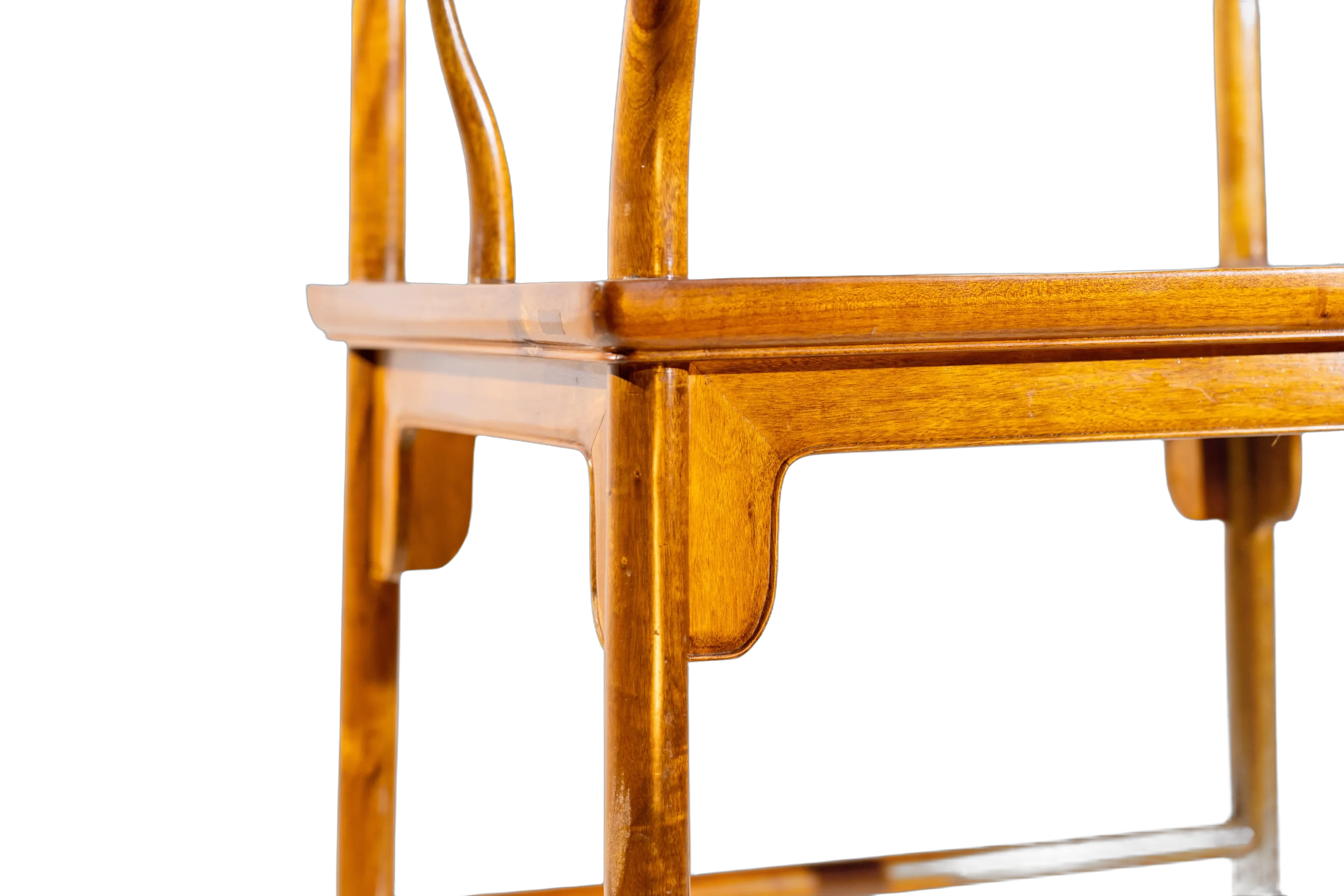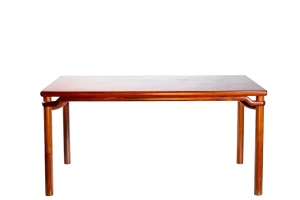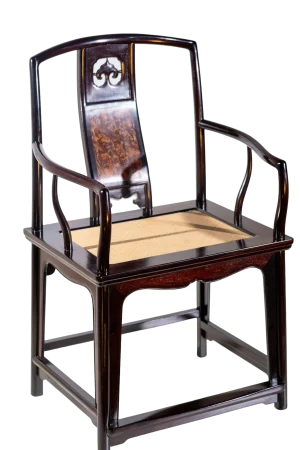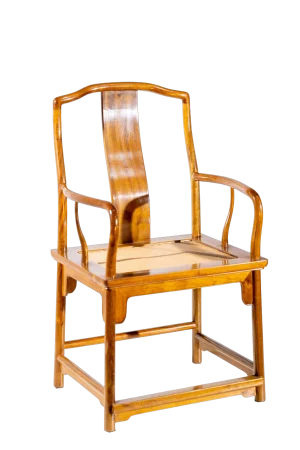The Southern Official’s Hat Armchair (Scholar’s Chair) is a classic example of Ming dynasty furniture, renowned for its elegant, minimalist design and historical significance. The chair gets its name from the resemblance of its top rail to the hats worn by southern Chinese officials during the Ming and Qing dynasties.
Design Features:
- Top Rail: The top rail of the chair curves gently outward at both ends, imitating the wings of an official’s hat. This design is both symbolic and functional, representing authority and power, while offering comfort to the sitter.
- Backrest: The backrest is typically a smooth, single panel with a gentle arc, providing ergonomic support for the spine. The clean lines of the backrest are meant to reflect the chair’s scholarly nature.
- Armrests: The armrests extend forward from the back rail, sometimes slightly flaring out, contributing to the visual balance and stability of the chair.
- Seat: The seat of the chair is made from woven cane. The construction is usually a square or rectangular frame, with a “waisted” design where the frame narrows between the seat and the legs, adding a sense of delicacy.
- Legs and Feet: The legs are straight and sturdy, often tapering slightly towards the bottom. Some chairs feature horse-hoof shaped feet, a traditional detail that lends the chair both visual stability and a touch of grandeur.
- Mortise and Tenon Joinery: Like most traditional Chinese furniture, the Southern Official’s Hat Chair uses mortise and tenon joints—a sophisticated technique that requires no nails or screws, making the chair both durable and aesthetically clean.
Symbolism and Cultural Significance:
The chair is not only functional but also a symbol of status and refinement, often associated with scholars (hence the name Scholar’s Chair). It embodies Confucian ideals of simplicity, harmony, and balance, reflecting the intellectual rigor and cultural sophistication of the literati class.
Historically, the Southern Official’s Hat Armchair was favored by scholars, officials, and intellectuals, often found in study rooms or used during important gatherings, emphasizing its link to learning and status.
The overall design of the chair is elegant yet restrained, combining form with function, and reflecting the aesthetics of Ming furniture, where simplicity and proportion are paramount. It exudes a sense of dignity and poise, making it a timeless piece of Chinese furniture.











Reviews
There are no reviews yet.